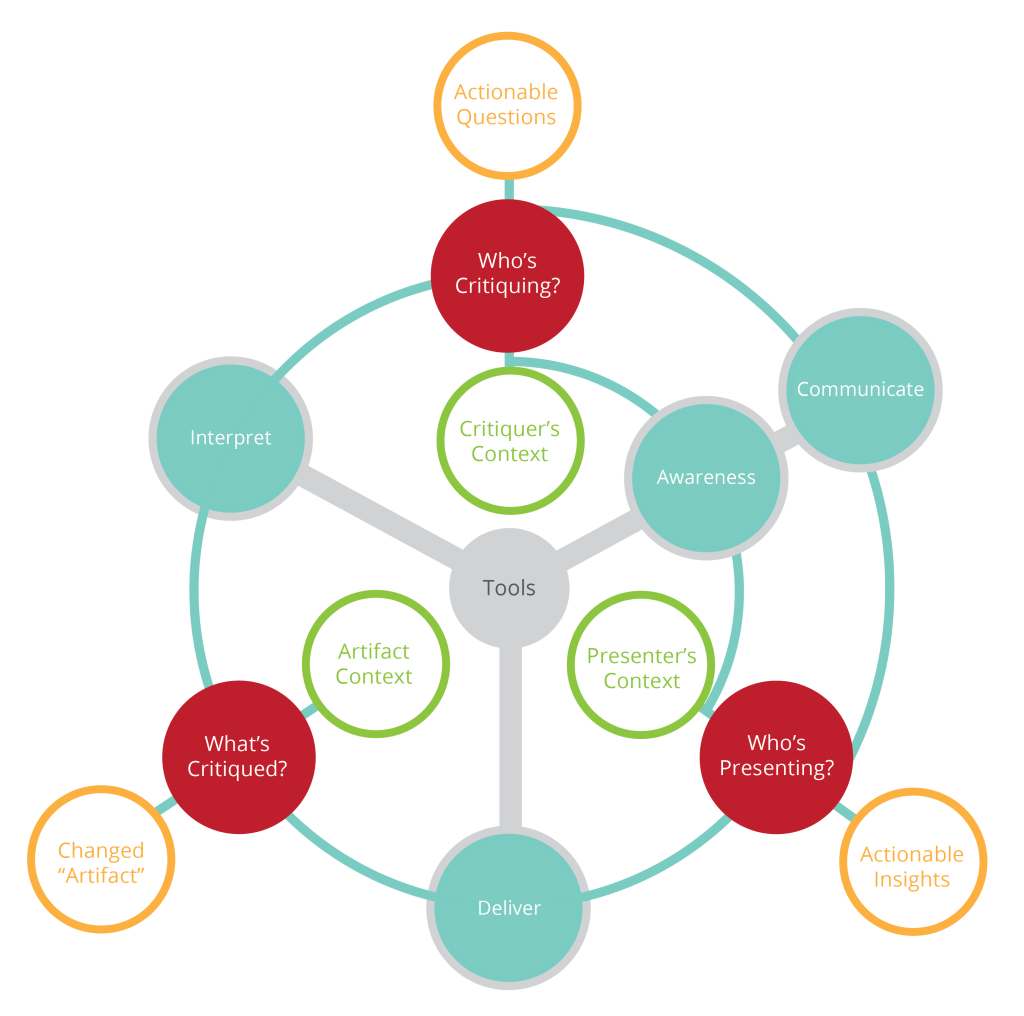Critique Process
The following critique diagram is based on the analysis of many critique theories and critique tools. It describes the process from the Critic’s initial viewing of the artifact to the interaction between the Critic and Presenter. It also shows what aspects of the process can be aided by the tools we’ve found.
See below for details!

Who’s Critiquing?
- Professor
- Peer
- Community
- End User
- Crowd
- Self
- Stake Holder
- Automated
Who’s Presenting?
- Student
- Team
- Class
What’s Critiqued?
- Artifact
- Representation
- Presentation
- Iterations
- Design Process
- Team Process
Interpret
- Who’s Critiquing should observe and notice issues in What’s Critiqued, taking context into consideration.
Deliver
- Display Necessary Info
- Present
- Ask Questions
Communicate
Clearly express one’s thoughts through actions, facial expressions, and words.
- Converse
- Choose Delivery Method
- Give Permissioned Opinions
Awareness
Understanding the speaker’s intentions through:
- Conversational Context
- Facial Expression
- Body Language
- Tone of Voice
- Where They’re Looking
- Individual History
- Person’s Location
- Time
Critic’s & Presenter’s Context
- Type of Critique
- Learning Goals
- Motivation
- Personal History: Experiences, Knowledge, Context, Culture, Ethics
Artifact Context
- Design Phase
- Context
- Culture
Actionable Questions
- Peer Cognition
- Critic Cognition
Actionable Insights
- Ideas / Plans for Next Iterations
- Student Cognition
- Insights
Changed Artifact
- Reflection of Maker’s Interpretation of Critiques
- New Versions
Tools
- Online tools that can aid the Critique Process